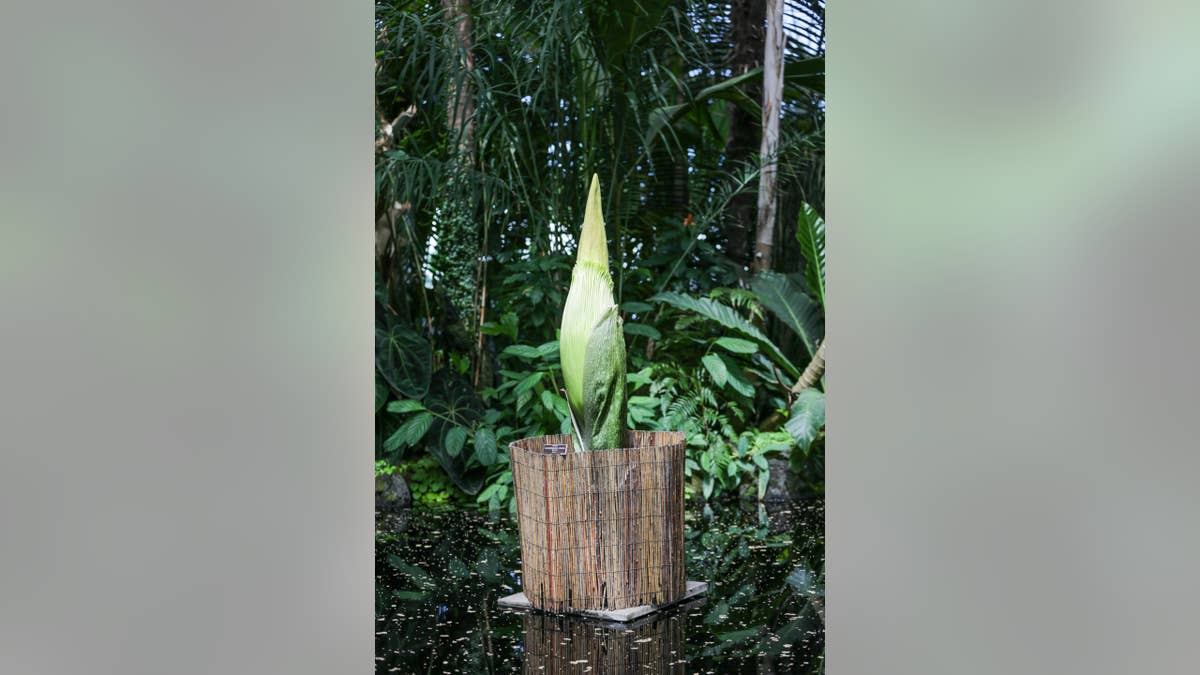
The corpse flower (New York Botanical Garden).
Plant lovers in New York are in for a smelly treat with the imminent bloom of a rare corpse flower at the city's Botanical Garden.
Famous for its highly pungent odor, which has been compared to the smell of rotting meat, the Amorphopallus Titanum, or corpse flower, has a very unpredictable bloom cycle. Native to Sumatra in Indonesia, a specimen of the flower first bloomed in the Western Hemisphere at the New York Botanical Garden in 1937. A second specimen bloomed at the site in 1939.
Almost 80 years later, the Botanical Garden is confident that another corpse flower will repeat the rare phenomenon. Corpse flowers have a brief 24-to-36 hour bloom cycle and experts expect the stinky event to occur sometime this week. Media reports indicate that the flower could even bloom Wednesday or Thursday.
The flower, which uses its stench to attract pollinators that feed on dead animals, has been carefully nurtured by Botanical Garden staff for almost a decade.
“We’re eagerly awaiting its bloom, just like everybody else,” a spokeswoman for the New York Botanical Garden told FoxNews.com.
The #corpseflower continues to grow and keep us guessing. pic.twitter.com/t86DUqZSTx
— NY Botanical Garden (@NYBG) July 25, 2016
Horticulturalists noticed that the flower bud had formed July 15. On July 18 the flower was moved from the Botanical Garden’s behind-the-scenes Nolen Greenhouses for Living Collections to the Enid A. Haupt Conservatory, where it is now on display in the Palms of the World Gallery.
One of the largest flowers in the world, corpse flowers can grow to 12 feet in their natural habitat and 8 feet in cultivation. The Botanical Garden notes that, although the enormous plant resembles one giant flower, it comprises a fleshy central spike called a spadix that holds two rings of male and female flowers, wrapped by a frilly spathe – a modified leaf that looks like a petal.
Related:
“During bloom, the spadix self-heats to approximately human body temperature, which helps disseminate odor particles,” explained the Botanical Garden, in a statement. “The spathe unfurls during the course of about 36 hours (full bloom) before withering and dying back.”
It will likely be several more years before the flower blooms again, according to the Botanical Garden, which is livestreaming the flower on a Corpse Flower Cam.
Plant lovers in the Windy City enjoyed the rare phenomenon of a corpse flower in bloom when one of the Chicago Botanic Garden’s eight corpse flowers, dubbed Alice, began blooming, much to the surprise of horticulturalists.
Follow James Rogers on Twitter @jamesjrogers




















